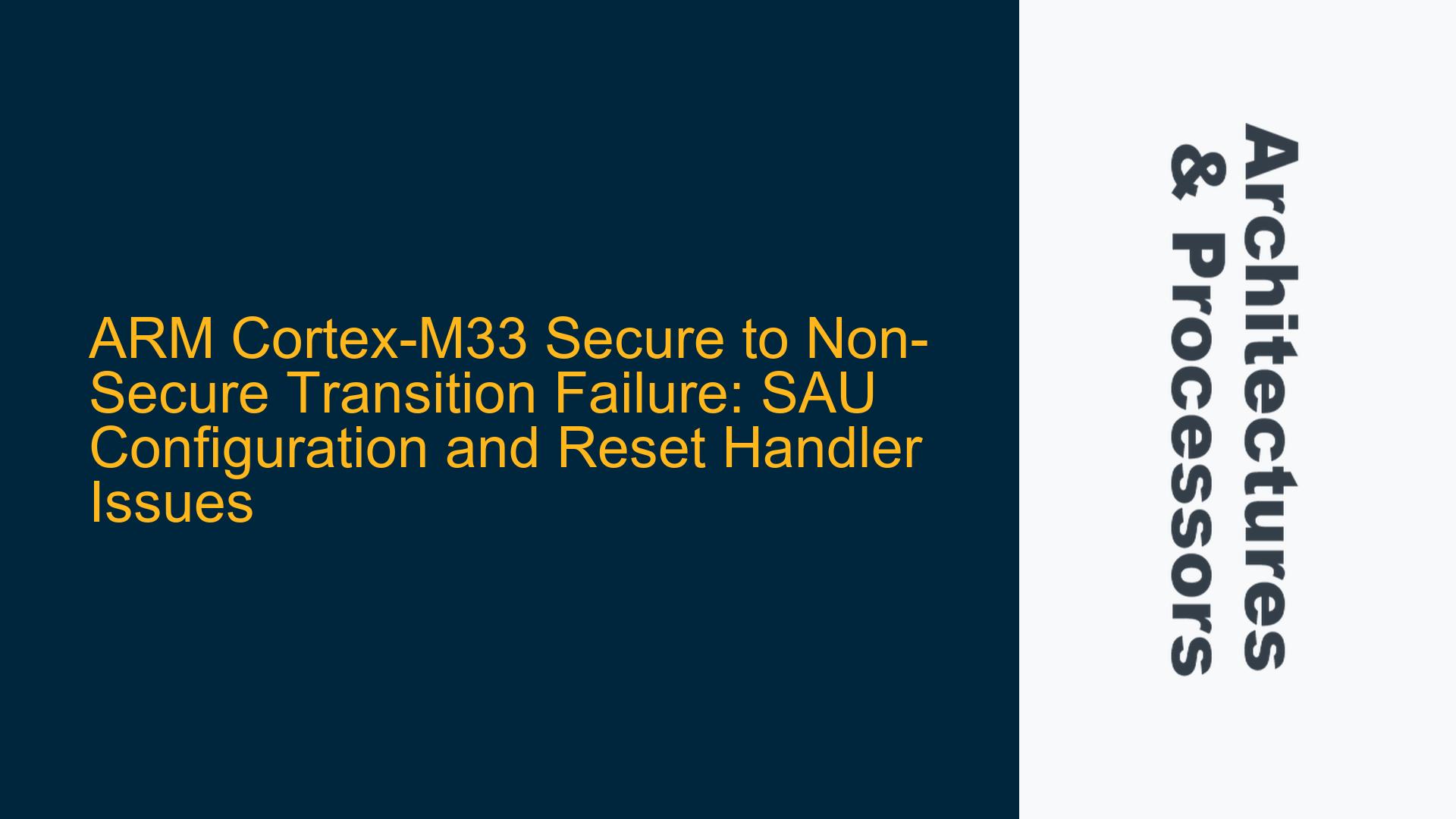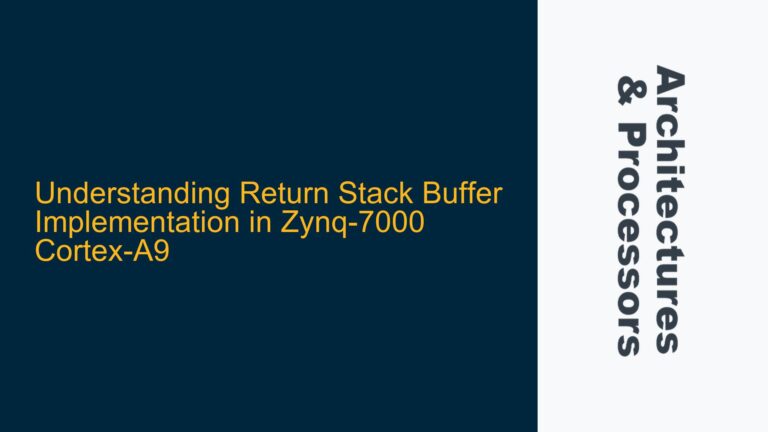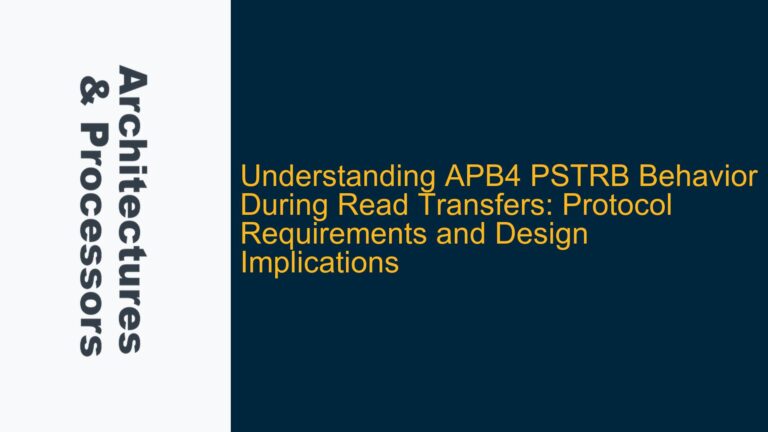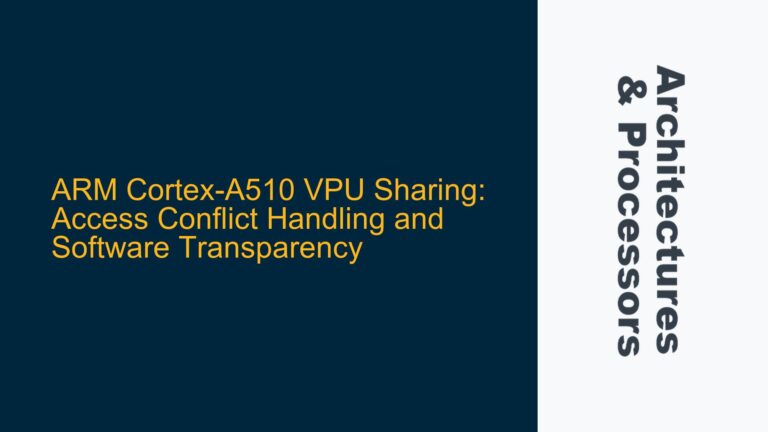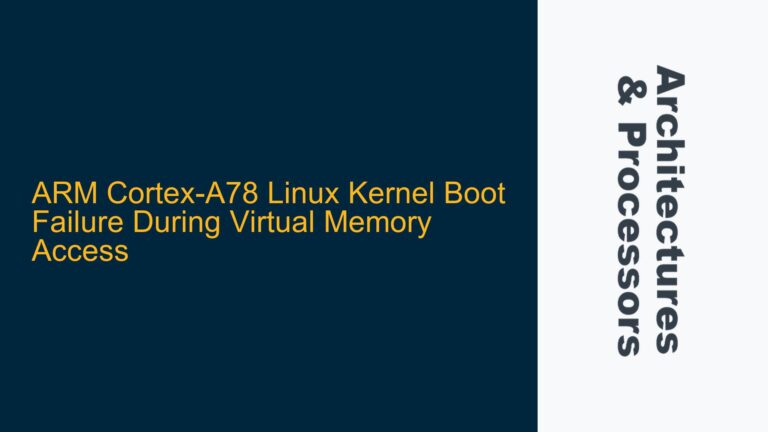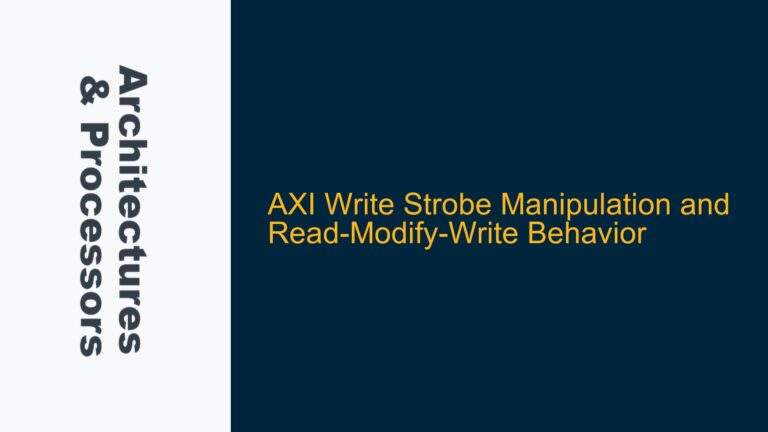ARM Cortex-M33 Secure to Non-Secure Transition Failure During Reset Handler Execution
The ARM Cortex-M33 processor, with its TrustZone security extension, allows for the partitioning of code and data into secure and non-secure worlds. This partitioning is crucial for applications requiring robust security, such as IoT devices, where sensitive operations must be isolated from less trusted code. However, transitioning from the secure world to the non-secure world during the initialization phase can be fraught with challenges, particularly when the Secure Attribution Unit (SAU) is improperly configured. In this scenario, the processor attempts to branch to the non-secure reset handler but fails, reverting to the secure main function. This issue is often rooted in the SAU configuration, which governs the memory partitioning between secure and non-secure regions.
The SAU is responsible for defining the memory regions as secure or non-secure. When the SAU is not configured correctly, the processor cannot correctly interpret the memory boundaries, leading to a failure in transitioning to the non-secure world. This manifests as the processor being unable to execute the non-secure reset handler, causing it to fall back into the secure code. Understanding the SAU’s role and ensuring its proper configuration is critical to resolving this issue.
Improper SAU Configuration and Memory Region Misalignment
The primary cause of the failure to transition to the non-secure reset handler lies in the misconfiguration of the SAU. The SAU is a hardware unit that defines the memory regions as secure or non-secure based on the settings provided during the initialization phase. If the SAU is not configured correctly, the processor cannot correctly interpret the memory boundaries, leading to a failure in transitioning to the non-secure world.
One common mistake is the incorrect assignment of memory regions in the linker script. The linker script must accurately reflect the memory layout, including the secure and non-secure regions. If the memory regions are misaligned or incorrectly defined, the SAU will not be able to properly partition the memory, leading to the observed failure. Additionally, the SAU configuration must be consistent with the memory map defined in the hardware. Any discrepancy between the SAU settings and the actual memory layout will result in the processor being unable to transition to the non-secure world.
Another potential cause is the timing of the SAU configuration. The SAU must be configured before the processor attempts to transition to the non-secure world. If the SAU configuration is delayed or occurs after the transition attempt, the processor will not have the correct memory partitioning information, leading to a failure. This is particularly critical during the initialization phase, where the order of operations can significantly impact the system’s behavior.
Correct SAU Configuration and Memory Region Alignment for Successful Non-Secure Transition
To resolve the issue of the processor failing to transition to the non-secure reset handler, it is essential to ensure that the SAU is correctly configured and that the memory regions are properly aligned. The following steps outline the process for achieving this:
-
Verify the Linker Script Configuration: The linker script must accurately define the secure and non-secure memory regions. This includes specifying the base addresses and sizes of the secure and non-secure regions. The linker script should be reviewed to ensure that it matches the memory map defined in the hardware. Any discrepancies should be corrected to ensure that the SAU can correctly partition the memory.
-
Configure the SAU Properly: The SAU must be configured before the processor attempts to transition to the non-secure world. This involves setting up the SAU registers to define the secure and non-secure memory regions. The SAU configuration should be performed early in the initialization sequence, ideally before any attempt to branch to the non-secure reset handler. The SAU configuration should be consistent with the memory map defined in the linker script.
-
Ensure Correct Timing of SAU Configuration: The SAU configuration must be completed before the processor attempts to transition to the non-secure world. This requires careful sequencing of the initialization code to ensure that the SAU is configured before any attempt to branch to the non-secure reset handler. This can be achieved by placing the SAU configuration code early in the secure initialization sequence.
-
Validate the SAU Configuration: After configuring the SAU, it is essential to validate the configuration to ensure that it has been applied correctly. This can be done by reading back the SAU registers and verifying that they contain the expected values. Any discrepancies should be investigated and corrected.
-
Debugging and Testing: Once the SAU has been configured and validated, the system should be tested to ensure that the processor can successfully transition to the non-secure reset handler. This can be done using a debugger to step through the code and verify that the processor branches to the non-secure reset handler as expected. If the transition fails, the SAU configuration should be reviewed and adjusted as necessary.
By following these steps, the issue of the processor failing to transition to the non-secure reset handler can be resolved. Proper configuration of the SAU and accurate alignment of the memory regions are critical to ensuring a successful transition. Careful attention to the timing of the SAU configuration and thorough validation of the configuration are essential to achieving a reliable and secure system.
In conclusion, the failure to transition to the non-secure reset handler in an ARM Cortex-M33 processor is often due to improper SAU configuration and memory region misalignment. By carefully configuring the SAU, aligning the memory regions, and validating the configuration, this issue can be resolved, ensuring a successful transition to the non-secure world. This process requires a thorough understanding of the SAU’s role and the memory layout, as well as careful attention to the timing of the configuration. With these steps, the system can achieve the desired security partitioning and reliable operation.
